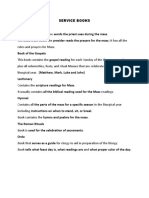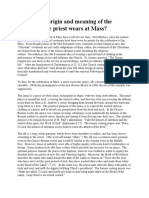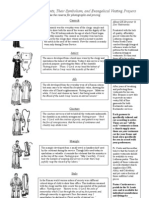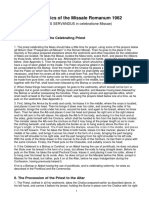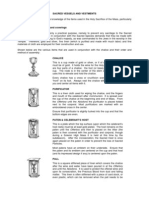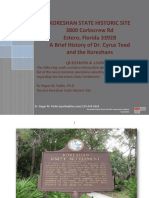0% found this document useful (0 votes)
92 views11 pagesTypes of Vestments
The document outlines various liturgical vestments used in the Old Catholic Apostolic Church, detailing their purpose, symbolism, and variations. It includes descriptions of items such as the amice, biretta, chasuble, and others, along with their historical context and current usage. Additionally, it covers the significance of liturgical colors and symbols associated with these vestments.
Uploaded by
omulabernardCopyright
© © All Rights Reserved
We take content rights seriously. If you suspect this is your content, claim it here.
Available Formats
Download as PDF, TXT or read online on Scribd
0% found this document useful (0 votes)
92 views11 pagesTypes of Vestments
The document outlines various liturgical vestments used in the Old Catholic Apostolic Church, detailing their purpose, symbolism, and variations. It includes descriptions of items such as the amice, biretta, chasuble, and others, along with their historical context and current usage. Additionally, it covers the significance of liturgical colors and symbols associated with these vestments.
Uploaded by
omulabernardCopyright
© © All Rights Reserved
We take content rights seriously. If you suspect this is your content, claim it here.
Available Formats
Download as PDF, TXT or read online on Scribd
/ 11




